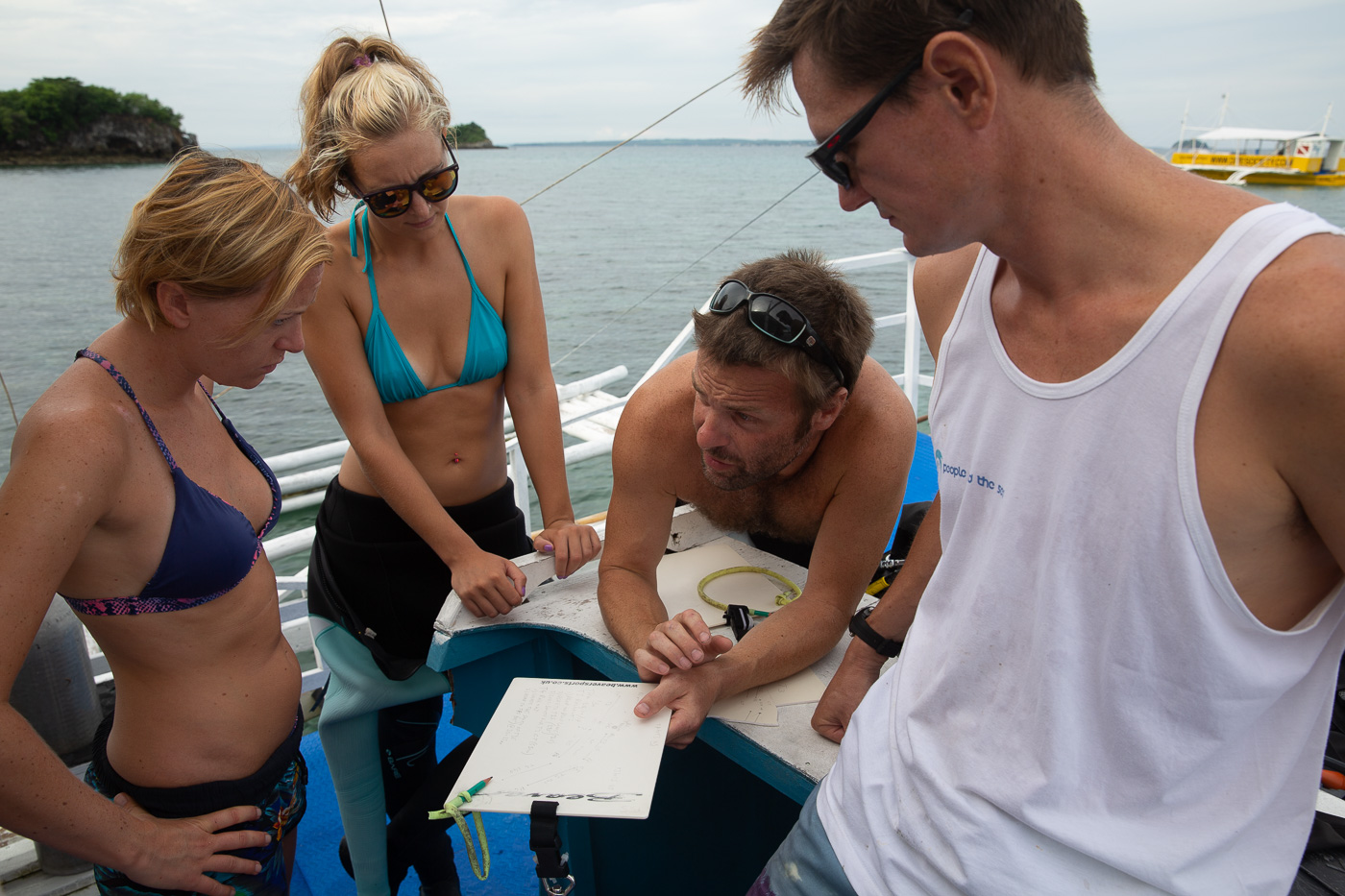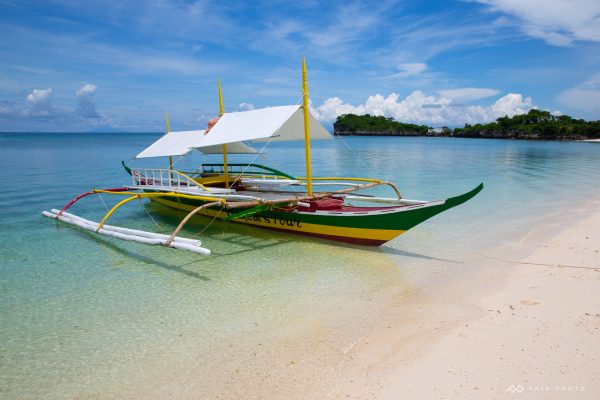While briefly staying in Cebu in the Philippines, I was informed about a small environmental organisation called “People and the Sea”.
The organisation is located on Malapascua, a tiny island located just north of Cebu. After finding their website, I managed to get in touch with co-founder Ian, who invited me for a visit.
Malapascua island is located in the near centre of the Philippines and is quite populated for it’s size; about 8000 inhabitants live on a surface of about 2.5 by 1 kilometre wide.
The sea is the main resource for the local communities on the island, as they depend on the ocean for either finding food or through tourism.
Mainly divers tend visit the island as it is closely located to a famous dive site named “Monad Shoal”, where thresher sharks can be spotted reliably.
Islanders live in self made “Nipa huts”. 24 hours electricity on the island only arrived in 2009 and water is still sourced from ground wells.
It is estimated that 81% of ocean plastics come from Asian rivers, whereas the Philippines alone contribute around one-third of the global total¹. Inhabitants often can’t afford larger products and buy many, individually packaged, smaller items and waste management is extremely poor.
People and the Sea is a marine based conservation initiative located in Malapascua, founded by Axelle Jorcin and Ian Mills. Their goal is to work with local communities to find solutions to their environmental problems. In the words of Axelle: “Solutions to environmental problems also happen to be solutions to social problems as they are interrelated. For example, people get sick because there are no toilets, water is polluted and toxic chemicals are used and disposed inappropriately. Helping people build toilets and teaching them not to put chemicals in the sea helps to create a better life. When they have a better life, they have a better environment.”
According to Axelle, one of the biggest environmental problem of the Philippines and other countries in South East Asia is the (mis-)management of waste. “Locals don’t like to live in trash, just like we don’t but they just don’t have solutions in place.” There are no cars on the island, everything is done by hand which makes everything extra difficult.
Axelle continues: “Another problem is their extreme poverty, which had forced them to look for other ways to fish in the last 30 years or so. One method they use is to literally blow up the fish using dynamite. This method is highly destructive and also dangerous to the fishermen themselves”. Axelle stresses that they don’t like to do it and they are not proud of it, but that it is a lot cheaper than the conventional methods they knew. “Unless we can find a better and more sustainable way for them to fish, they will use dynamite.”
People and the Sea’s “people” programs are grouped into 3 main areas: solid waste-management, education and entrepreneurship.
At sea, People and the Sea runs a program to monitor and assess the marine resources of the region.
A team led by Ian Mills undertakes regular dive surveys to assess the health of the benthic cover (the bottom of the sea) and the abundance and diversity of fish and invertebrates.
Numbers of fish and other sea life are counted within a small surface at about 10 different sites. For more important fish such as groupers, their size is assessed as well.
Knowing the health of the ocean is critical when there is an effort to conserve marine habitats. By setting up a monitoring program that is carried on over a larger period of time, changes will become visible, meaningful comparisons can be made and different causes of change can start to be explored.
Ian (middle) says: “You don’t have to look hard to find evidence that [the ocean] is struggling and under pressure”. He continues: “You can just stand by and hope that it sorts itself out or you can try and do something to help. It’s as simple as that.”
The survey data and analysis are shared with anyone who would benefit from having this information, such as the local environment office, who don’t have the resources to send divers themselves.
A great strength of the initiative is that it is following a completely self-funded and self-sustained model. According to Ian, conservation efforts can sometimes be project funded but then if the funds dry up the project can end too. Ian stresses the importance of longevity with this program so that meaningful analysis from a baseline can be made over a longer period of time, which would make the insights a lot more valuable.
There are currently about a dozen marine protected area’s (MPA’s) setup around the island and the data from the surveys help to find out whether their MPA statuses have been successful and to determine which new areas should be added to this list.
Along the east coast of mainland Cebu, local fishermen realised that the marine habitat had become too degraded and asked the dive team at People and the Sea to help find new marine sites to protect. Ian ads: “If it comes from a grassroots place it stands a lot more chance to be successful in the long run”.
Even though the recent past has seen two big typhoons and overfishing using unsustainable methods, which all have had substantial impact, Ian can anecdotally confirm that he has seen a bit of improvement in the two years since they have been running the surveys. Having said this, he immediately ads that in the grand scheme of things, this is not very long. “That’s why it’s really important that we keep the monitoring going so that we can start to look for changes over a longer period of time”.
Reserve your copy of the Langob Pambot print today and support People and the Sea‘s efforts to conserve marine habitats, reduce waste and educate locals on the importance of the environment and sustainability.
-
Langob Pambot
Philippines
From $89.00
- Richie, H 2021, “Where does the plastic in our oceans come from?”, Our World in Data, https://ourworldindata.org/ocean-plastics

